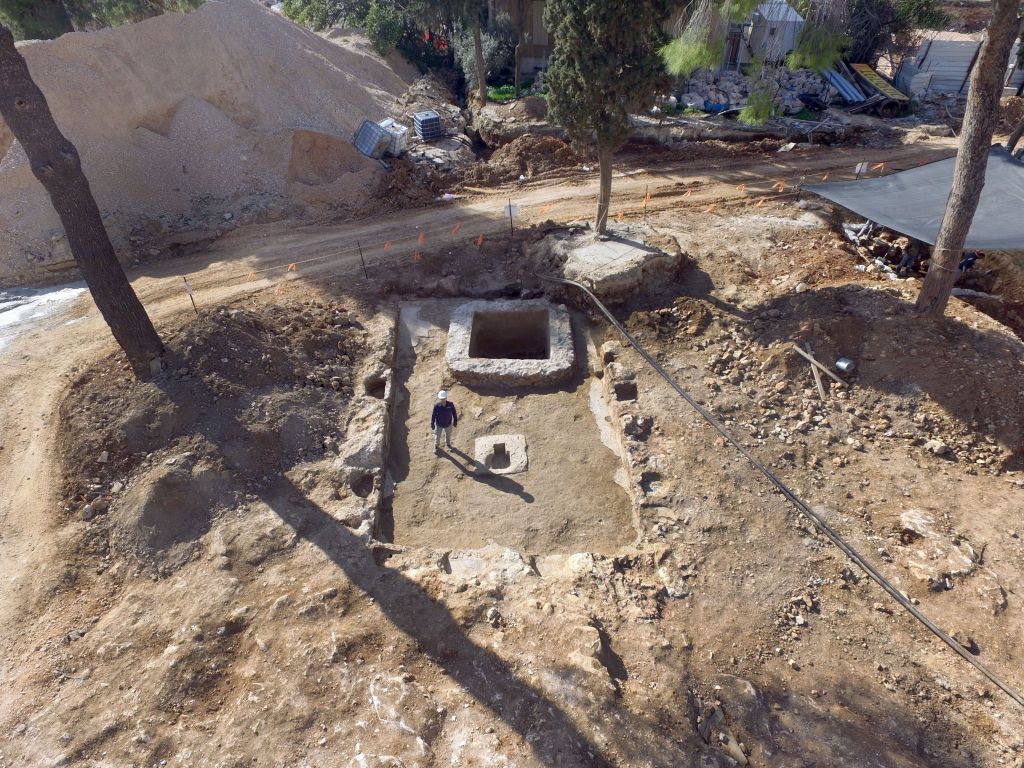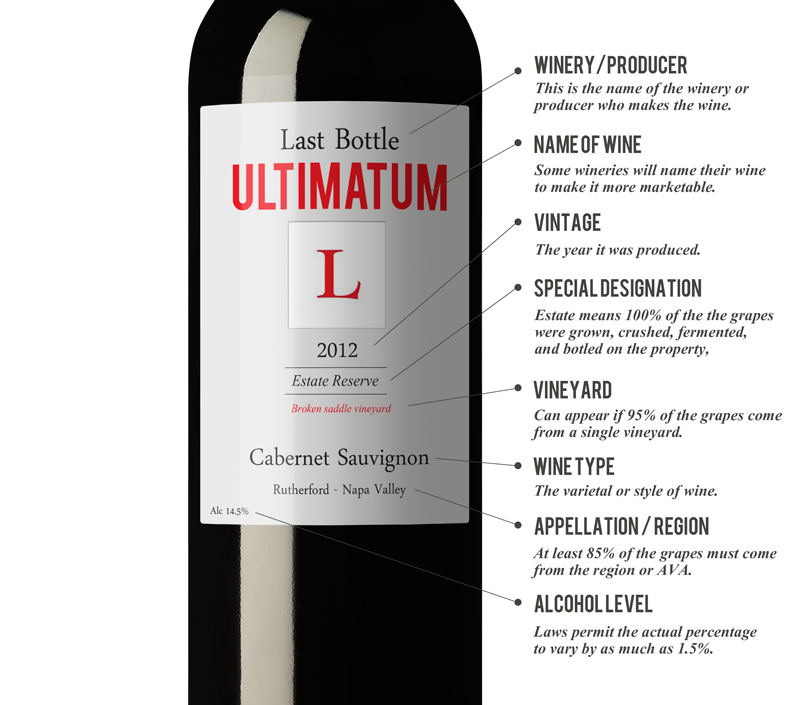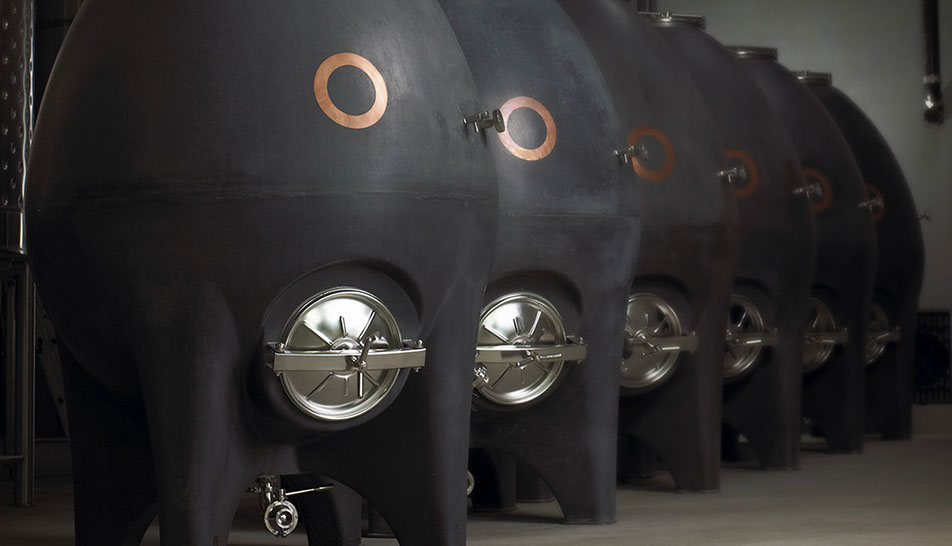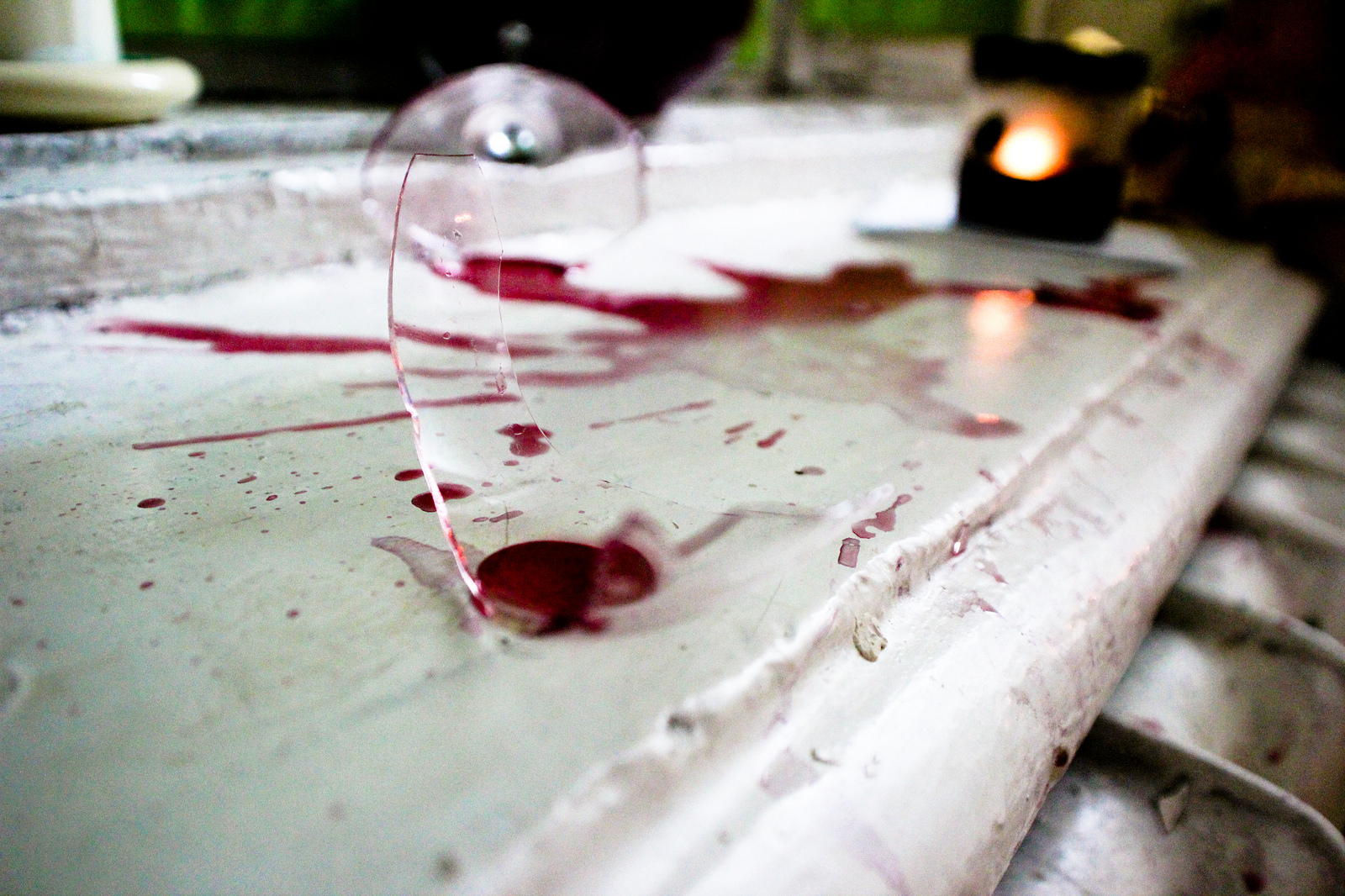Bordeaux and Burgundy seem to get all the attention, but the Loire Valley might be home to some of the most exciting wines in France. Made in a variety of styles, and generally more affordable than other French wines, the area has long been known for its zippy whites, juicy reds, elegant sparklers and mouthwatering dessert wines.
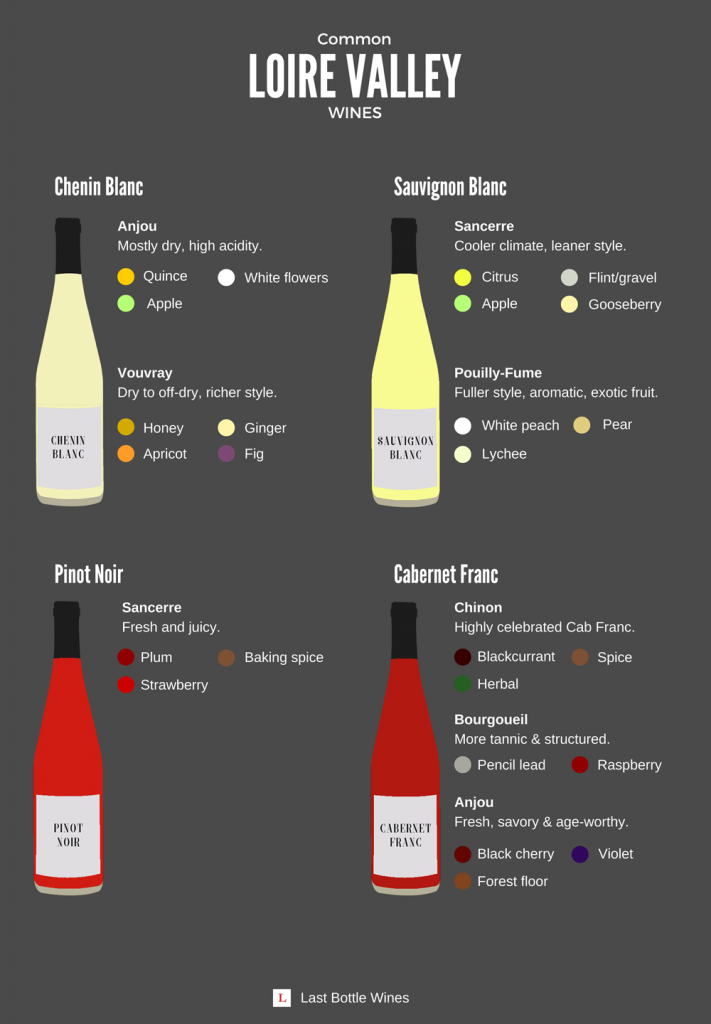
The Geography
Known as the “garden of France”, Loire is home to scenic rolling hills, grand castles, ancient towns, and over 4000+ wineries. The region stretches over 600 miles east to west across the middle of France starting near the Atlantic and ending near Burgundy. Like other French wine regions, production is tightly segmented by the land, with 80+ appellations spread between lower, middle and upper regions.
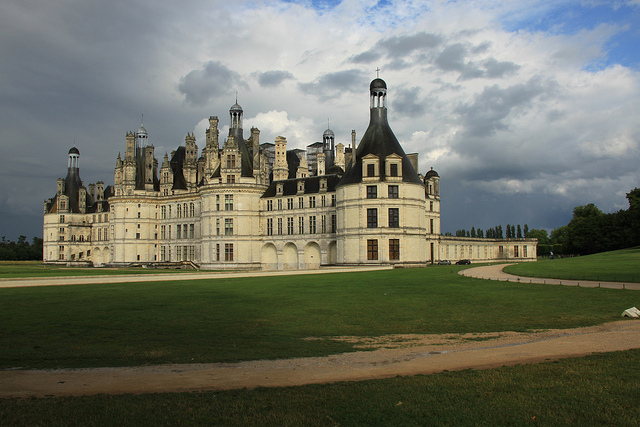
Loire is filled with impressive chateaux, like the immense Chambord castle. Photo by Christian Bortes
The Climate
Bring a jacket if you travel here. Even in the summer, where the average high temperature hits just 64 degrees. This cool climate makes for inconsistent vintages as grapes struggle to fully ripen before harvest.
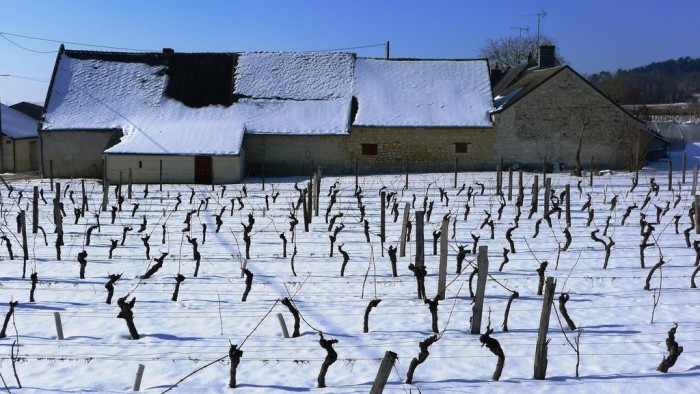
Unpredictable weather makes for inconsistent vintages. Eric Pfanner/International Herald Tribune
The Wines
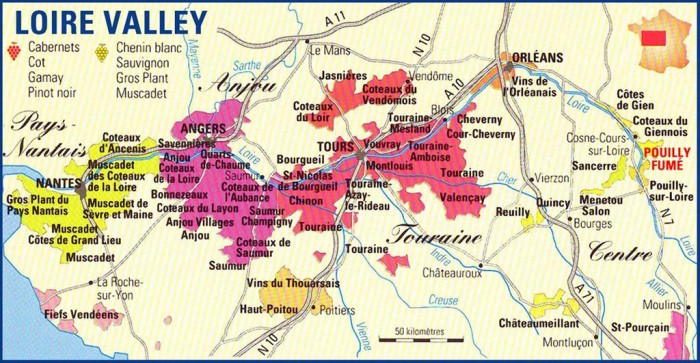
Strict rules govern the types of wines grown in each appellation. White wines dominate, with Chenin Blanc taking center stage. It’s produced in a wide range of styles, from totally bone dry to sweet. Still relatively obscure on the market, but gaining in popularity, people love Chenin Blanc for its distinct flavors of honeysuckle, lemon, herbs, and its bracing acidity.
“As a longtime fan of Loire Valley wines, I’ve never understood why they’ve remained so affordable. (Not that I’m complaining, of course.)” – Lettie Teague
Sauvignon Blanc also has a firm establishment in the region, most notably in Pouilly-Fume and Sancerre. While red wines aren’t as common, some incredible Cabernet Franc, Pinot Noir, and sparkling wine comes from Loire, along with small amounts of Melon de Bourgogne and Gamay.
Upper Loire
The smallest part of Loire is perhaps the most famous thanks to two appellations – Sancerre and Pouilly-Fume.
Sancerre
For many critics and consumers Sancerre represents the ultimate rendition of Sauvignon Blanc. It’s classy, with zippy grapefruit, bright citrus, and gooseberry flavors braced by high acidity and a trademark flinty minerality. The cool climate, higher elevation, and limestone/gravel soils impress a distinct minerality on Sancerre wines. Rarely oaked, Sancerre goes well with food, especially goat cheese or shellfish.
A small amount of Pinot Noir and Gamay also grows here. For those of you looking for a cheaper alternative to Burgundy, red Sancerre is insanely drinkable with juicy, laser focused red fruit and a light to medium body.
Pouilly-Fumé
Just across the Loire river sits Pouilly-Fumé, where Sauvignon Blanc takes center stage. Several kinds of soil give it a layered profile. Clay soils at lower elevation result in a richer style, with potent aromatics and more exotic fruit flavors. Grapes grown in silex (flint) show a smoky gunflint profile. A few years of aging usually helps integrate these richer flavors. Neither Sancerre or Pouilly-Fumé see oak, and both show off a laser-focused acidity.
Other notable AOPs include:
- Reuilly, where small amounts of Sauvignon Blanc, Pinot Gris and Pinot Noir grapes grow.
- Menetou-Salon hosts ten communes which produce great value Pinot and rosé. Also home to some wonderful sparkling wines.

Late harvested grapes with botrytis used for dessert wines. Photo by John Yesberg
Middle Loire
While the Upper Loire focuses almost entirely on whites, the Middle Loire brings the most diversity. You’ll find reds, whites, rose, and sweet wines here.
Vouvray
This sub-appellation of Touraine pumps out more Chenin Blanc than anywhere else in France. But the unpredictable climate means quality varies between vintages. Cooler vintages lean toward the dry style, while warmer ones favor a sweeter dessert style wine. When Mother Nature plays nice the results are epic. Some sweet Vouvray can age up to 100 years.
Chinon
White wine dominates in Loire. That’s not the case in Chinon, where some of the most recognized Cabernet Franc is grown. Vineyards planted on steep slopes along river banks host a variety of rugged soils – Jurassic rock, hard gravel, and limestone. The lower slopes produce more approachable wines, with notes of blackcurrant, anise and trademark herbal qualities. The steeper slopes at higher elevation produce more structured and tannic Cab Franc that tends to age better.
Anjou-Saumur
The town of Angers and Saumur represent the largest portion of this region and form the Anjou AOP, with 46 associated communes. Some of those include:
- Savennières has historically been a place for some mindblowing sweet dessert wines but lately they’re producing more dry Chenin Blanc.
- Coteaux du Layon specializes in sweet dessert wines often made from botrytized grapes.
- Cabernet d’Anjou AOP and Rosé d’Anjou AOP focus on pink wines, with the former producing a drier style.
- Bonnezeaux producers are known for their sweet dessert wines.
- Bourgouil is home to floral, fruity, and flinty Cab Franc with great aging potential.
- Crémant de Loire is made from Chenin Blanc grapes that come from Anjou, Saumur, and Touraine.
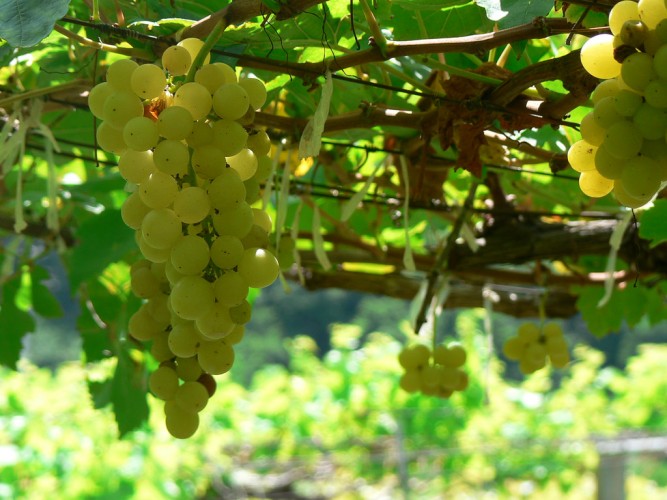
Most of Anjou’s dry and sweet white wine are made from Chenin Blanc grapes. Photo by Chrisada
Lower Loire
Also known as the Pays Nantais, the Lower Loire is closest to the coast. That makes for a cool and rainy climate that favors white wine production.
Muscadet
The largest AOP in the area, and home to Melon de Bourgogne (aka Muscadet), an inexpensive and not terribly complex wine. Basically it’s a lean, minerally wine that’s best enjoyed over a casual lunch.
Coteaux d’Ancenis AOP
This small appellation is home to the only rosé in the Lower Loire, where it’s made in a fruity, dry style using Gamay or Cab Franc grapes.
Muscadet de Sèvre et Maine AOP
Just below Nantes, and also home to Muscadet grapes. The difference is here many producers age their wine sur-lie, and then bottle the wine without racking or filtering. That results in a cloudy wine with a creamier texture.
Loire wines might still be unappreciated when compared to other regions in France, but don’t let that fool you. Places like Sancerre and Pouilly-Fume set high water marks for their Sauvignon Blanc while Chinon and Bourgueil define Cab Franc. The sheer variety and style of wines makes it one of the most dynamic and interesting wine regions in the world.
Tweet this
Loire Valley might be home to some of the most exciting wines in France Click To Tweet Sancerre represents the ultimate rendition of Sauvignon Blanc. Click To TweetReferences:
http://www.winemag.com/2011/04/06/decode-the-wines-of-the-loire-valley/

